Yinghao Ma
YuE: Scaling Open Foundation Models for Long-Form Music Generation
Mar 11, 2025Abstract:We tackle the task of long-form music generation--particularly the challenging \textbf{lyrics-to-song} problem--by introducing YuE, a family of open foundation models based on the LLaMA2 architecture. Specifically, YuE scales to trillions of tokens and generates up to five minutes of music while maintaining lyrical alignment, coherent musical structure, and engaging vocal melodies with appropriate accompaniment. It achieves this through (1) track-decoupled next-token prediction to overcome dense mixture signals, (2) structural progressive conditioning for long-context lyrical alignment, and (3) a multitask, multiphase pre-training recipe to converge and generalize. In addition, we redesign the in-context learning technique for music generation, enabling versatile style transfer (e.g., converting Japanese city pop into an English rap while preserving the original accompaniment) and bidirectional generation. Through extensive evaluation, we demonstrate that YuE matches or even surpasses some of the proprietary systems in musicality and vocal agility. In addition, fine-tuning YuE enables additional controls and enhanced support for tail languages. Furthermore, beyond generation, we show that YuE's learned representations can perform well on music understanding tasks, where the results of YuE match or exceed state-of-the-art methods on the MARBLE benchmark. Keywords: lyrics2song, song generation, long-form, foundation model, music generation
Audio-FLAN: A Preliminary Release
Feb 23, 2025Abstract:Recent advancements in audio tokenization have significantly enhanced the integration of audio capabilities into large language models (LLMs). However, audio understanding and generation are often treated as distinct tasks, hindering the development of truly unified audio-language models. While instruction tuning has demonstrated remarkable success in improving generalization and zero-shot learning across text and vision, its application to audio remains largely unexplored. A major obstacle is the lack of comprehensive datasets that unify audio understanding and generation. To address this, we introduce Audio-FLAN, a large-scale instruction-tuning dataset covering 80 diverse tasks across speech, music, and sound domains, with over 100 million instances. Audio-FLAN lays the foundation for unified audio-language models that can seamlessly handle both understanding (e.g., transcription, comprehension) and generation (e.g., speech, music, sound) tasks across a wide range of audio domains in a zero-shot manner. The Audio-FLAN dataset is available on HuggingFace and GitHub and will be continuously updated.
SuperGPQA: Scaling LLM Evaluation across 285 Graduate Disciplines
Feb 20, 2025Abstract:Large language models (LLMs) have demonstrated remarkable proficiency in mainstream academic disciplines such as mathematics, physics, and computer science. However, human knowledge encompasses over 200 specialized disciplines, far exceeding the scope of existing benchmarks. The capabilities of LLMs in many of these specialized fields-particularly in light industry, agriculture, and service-oriented disciplines-remain inadequately evaluated. To address this gap, we present SuperGPQA, a comprehensive benchmark that evaluates graduate-level knowledge and reasoning capabilities across 285 disciplines. Our benchmark employs a novel Human-LLM collaborative filtering mechanism to eliminate trivial or ambiguous questions through iterative refinement based on both LLM responses and expert feedback. Our experimental results reveal significant room for improvement in the performance of current state-of-the-art LLMs across diverse knowledge domains (e.g., the reasoning-focused model DeepSeek-R1 achieved the highest accuracy of 61.82% on SuperGPQA), highlighting the considerable gap between current model capabilities and artificial general intelligence. Additionally, we present comprehensive insights from our management of a large-scale annotation process, involving over 80 expert annotators and an interactive Human-LLM collaborative system, offering valuable methodological guidance for future research initiatives of comparable scope.
Foundation Models for Music: A Survey
Aug 27, 2024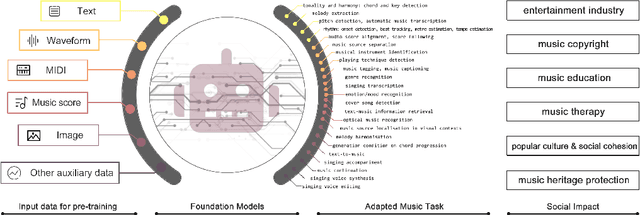
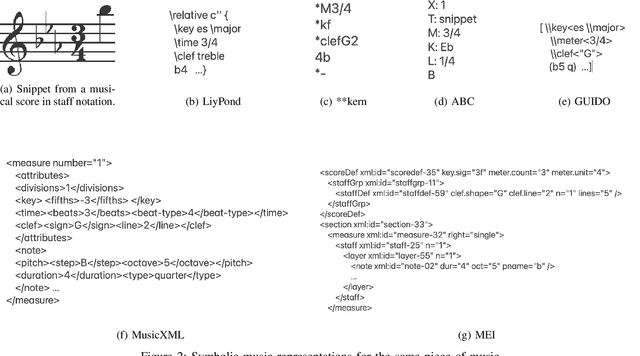
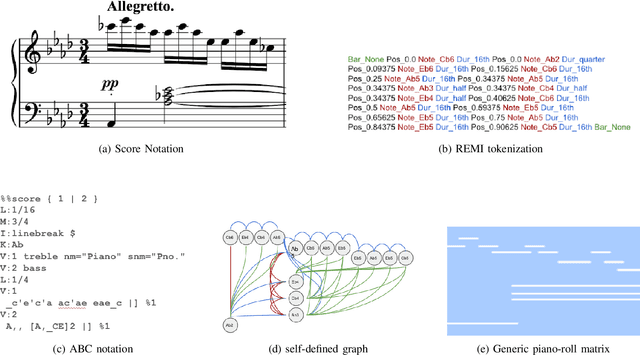
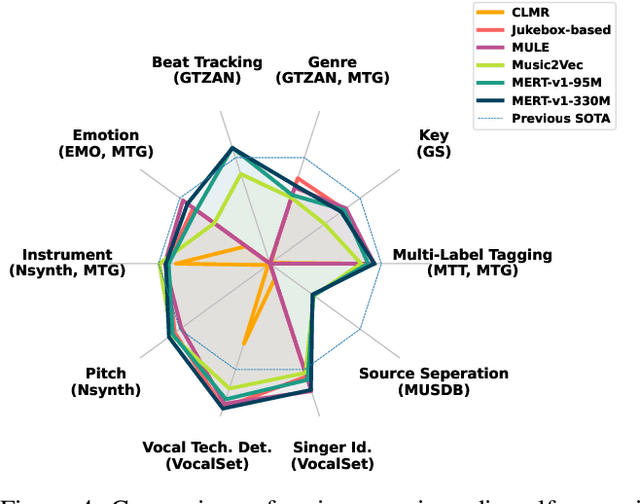
Abstract:In recent years, foundation models (FMs) such as large language models (LLMs) and latent diffusion models (LDMs) have profoundly impacted diverse sectors, including music. This comprehensive review examines state-of-the-art (SOTA) pre-trained models and foundation models in music, spanning from representation learning, generative learning and multimodal learning. We first contextualise the significance of music in various industries and trace the evolution of AI in music. By delineating the modalities targeted by foundation models, we discover many of the music representations are underexplored in FM development. Then, emphasis is placed on the lack of versatility of previous methods on diverse music applications, along with the potential of FMs in music understanding, generation and medical application. By comprehensively exploring the details of the model pre-training paradigm, architectural choices, tokenisation, finetuning methodologies and controllability, we emphasise the important topics that should have been well explored, like instruction tuning and in-context learning, scaling law and emergent ability, as well as long-sequence modelling etc. A dedicated section presents insights into music agents, accompanied by a thorough analysis of datasets and evaluations essential for pre-training and downstream tasks. Finally, by underscoring the vital importance of ethical considerations, we advocate that following research on FM for music should focus more on such issues as interpretability, transparency, human responsibility, and copyright issues. The paper offers insights into future challenges and trends on FMs for music, aiming to shape the trajectory of human-AI collaboration in the music realm.
Can LLMs "Reason" in Music? An Evaluation of LLMs' Capability of Music Understanding and Generation
Jul 31, 2024

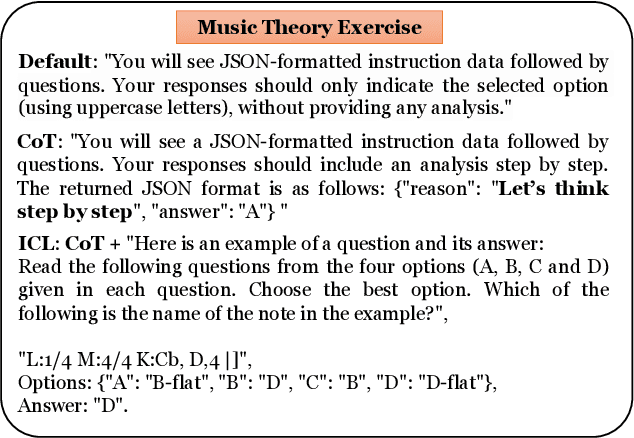
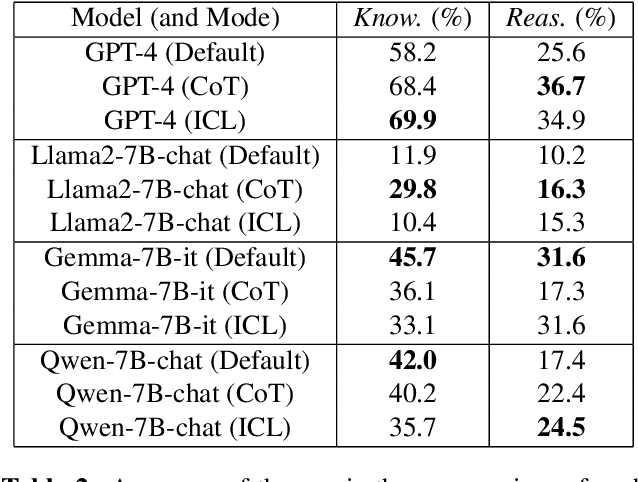
Abstract:Symbolic Music, akin to language, can be encoded in discrete symbols. Recent research has extended the application of large language models (LLMs) such as GPT-4 and Llama2 to the symbolic music domain including understanding and generation. Yet scant research explores the details of how these LLMs perform on advanced music understanding and conditioned generation, especially from the multi-step reasoning perspective, which is a critical aspect in the conditioned, editable, and interactive human-computer co-creation process. This study conducts a thorough investigation of LLMs' capability and limitations in symbolic music processing. We identify that current LLMs exhibit poor performance in song-level multi-step music reasoning, and typically fail to leverage learned music knowledge when addressing complex musical tasks. An analysis of LLMs' responses highlights distinctly their pros and cons. Our findings suggest achieving advanced musical capability is not intrinsically obtained by LLMs, and future research should focus more on bridging the gap between music knowledge and reasoning, to improve the co-creation experience for musicians.
D-CPT Law: Domain-specific Continual Pre-Training Scaling Law for Large Language Models
Jun 03, 2024



Abstract:Continual Pre-Training (CPT) on Large Language Models (LLMs) has been widely used to expand the model's fundamental understanding of specific downstream domains (e.g., math and code). For the CPT on domain-specific LLMs, one important question is how to choose the optimal mixture ratio between the general-corpus (e.g., Dolma, Slim-pajama) and the downstream domain-corpus. Existing methods usually adopt laborious human efforts by grid-searching on a set of mixture ratios, which require high GPU training consumption costs. Besides, we cannot guarantee the selected ratio is optimal for the specific domain. To address the limitations of existing methods, inspired by the Scaling Law for performance prediction, we propose to investigate the Scaling Law of the Domain-specific Continual Pre-Training (D-CPT Law) to decide the optimal mixture ratio with acceptable training costs for LLMs of different sizes. Specifically, by fitting the D-CPT Law, we can easily predict the general and downstream performance of arbitrary mixture ratios, model sizes, and dataset sizes using small-scale training costs on limited experiments. Moreover, we also extend our standard D-CPT Law on cross-domain settings and propose the Cross-Domain D-CPT Law to predict the D-CPT law of target domains, where very small training costs (about 1% of the normal training costs) are needed for the target domains. Comprehensive experimental results on six downstream domains demonstrate the effectiveness and generalizability of our proposed D-CPT Law and Cross-Domain D-CPT Law.
MAP-Neo: Highly Capable and Transparent Bilingual Large Language Model Series
May 29, 2024

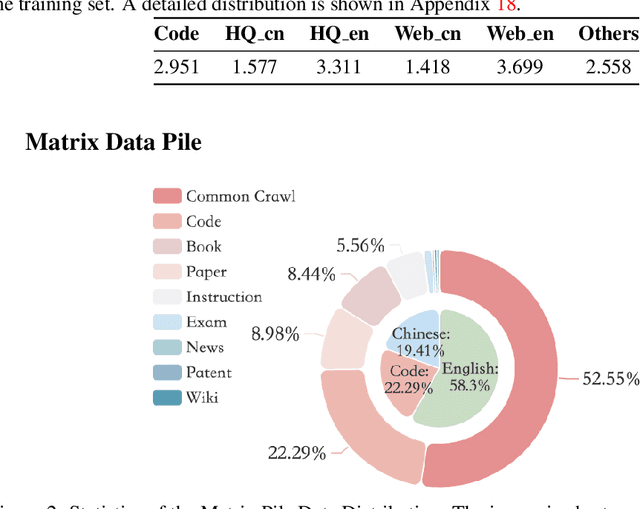

Abstract:Large Language Models (LLMs) have made great strides in recent years to achieve unprecedented performance across different tasks. However, due to commercial interest, the most competitive models like GPT, Gemini, and Claude have been gated behind proprietary interfaces without disclosing the training details. Recently, many institutions have open-sourced several strong LLMs like LLaMA-3, comparable to existing closed-source LLMs. However, only the model's weights are provided with most details (e.g., intermediate checkpoints, pre-training corpus, and training code, etc.) being undisclosed. To improve the transparency of LLMs, the research community has formed to open-source truly open LLMs (e.g., Pythia, Amber, OLMo), where more details (e.g., pre-training corpus and training code) are being provided. These models have greatly advanced the scientific study of these large models including their strengths, weaknesses, biases and risks. However, we observe that the existing truly open LLMs on reasoning, knowledge, and coding tasks are still inferior to existing state-of-the-art LLMs with similar model sizes. To this end, we open-source MAP-Neo, a highly capable and transparent bilingual language model with 7B parameters trained from scratch on 4.5T high-quality tokens. Our MAP-Neo is the first fully open-sourced bilingual LLM with comparable performance compared to existing state-of-the-art LLMs. Moreover, we open-source all details to reproduce our MAP-Neo, where the cleaned pre-training corpus, data cleaning pipeline, checkpoints, and well-optimized training/evaluation framework are provided. Finally, we hope our MAP-Neo will enhance and strengthen the open research community and inspire more innovations and creativities to facilitate the further improvements of LLMs.
ComposerX: Multi-Agent Symbolic Music Composition with LLMs
Apr 30, 2024



Abstract:Music composition represents the creative side of humanity, and itself is a complex task that requires abilities to understand and generate information with long dependency and harmony constraints. While demonstrating impressive capabilities in STEM subjects, current LLMs easily fail in this task, generating ill-written music even when equipped with modern techniques like In-Context-Learning and Chain-of-Thoughts. To further explore and enhance LLMs' potential in music composition by leveraging their reasoning ability and the large knowledge base in music history and theory, we propose ComposerX, an agent-based symbolic music generation framework. We find that applying a multi-agent approach significantly improves the music composition quality of GPT-4. The results demonstrate that ComposerX is capable of producing coherent polyphonic music compositions with captivating melodies, while adhering to user instructions.
MuPT: A Generative Symbolic Music Pretrained Transformer
Apr 10, 2024



Abstract:In this paper, we explore the application of Large Language Models (LLMs) to the pre-training of music. While the prevalent use of MIDI in music modeling is well-established, our findings suggest that LLMs are inherently more compatible with ABC Notation, which aligns more closely with their design and strengths, thereby enhancing the model's performance in musical composition. To address the challenges associated with misaligned measures from different tracks during generation, we propose the development of a Synchronized Multi-Track ABC Notation (SMT-ABC Notation), which aims to preserve coherence across multiple musical tracks. Our contributions include a series of models capable of handling up to 8192 tokens, covering 90% of the symbolic music data in our training set. Furthermore, we explore the implications of the Symbolic Music Scaling Law (SMS Law) on model performance. The results indicate a promising direction for future research in music generation, offering extensive resources for community-led research through our open-source contributions.
ChatMusician: Understanding and Generating Music Intrinsically with LLM
Feb 25, 2024
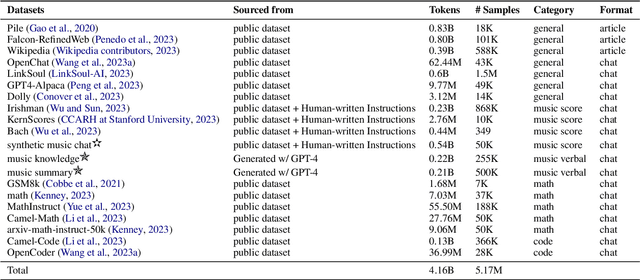


Abstract:While Large Language Models (LLMs) demonstrate impressive capabilities in text generation, we find that their ability has yet to be generalized to music, humanity's creative language. We introduce ChatMusician, an open-source LLM that integrates intrinsic musical abilities. It is based on continual pre-training and finetuning LLaMA2 on a text-compatible music representation, ABC notation, and the music is treated as a second language. ChatMusician can understand and generate music with a pure text tokenizer without any external multi-modal neural structures or tokenizers. Interestingly, endowing musical abilities does not harm language abilities, even achieving a slightly higher MMLU score. Our model is capable of composing well-structured, full-length music, conditioned on texts, chords, melodies, motifs, musical forms, etc, surpassing GPT-4 baseline. On our meticulously curated college-level music understanding benchmark, MusicTheoryBench, ChatMusician surpasses LLaMA2 and GPT-3.5 on zero-shot setting by a noticeable margin. Our work reveals that LLMs can be an excellent compressor for music, but there remains significant territory to be conquered. We release our 4B token music-language corpora MusicPile, the collected MusicTheoryBench, code, model and demo in GitHub.
 Add to Chrome
Add to Chrome Add to Firefox
Add to Firefox Add to Edge
Add to Edge